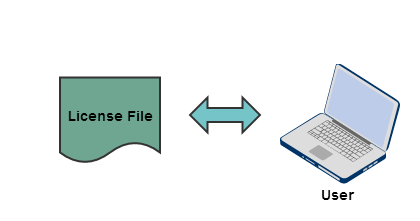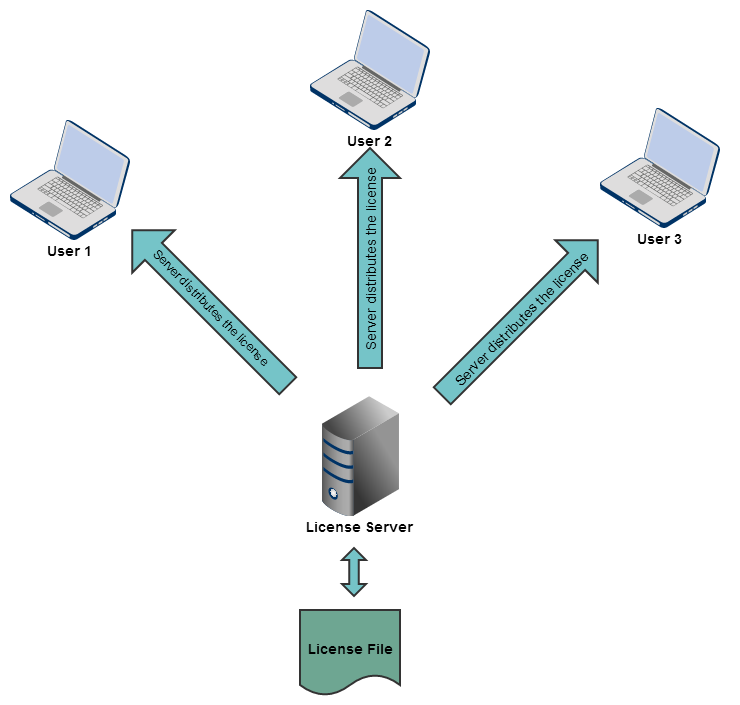Establish a license policy that suits your business. LM-X is configurable for a large variety of different license schemes, which usually consists of one or more features in your software. If your application has more than one differently licensed module, the license file will contain multiple features.
To establish a license policy, create one or more license template files, which contain a LICENSEFILE tag that encloses one or more FEATURE tags. Each FEATURE tag consists of a number of SETTING tags that specify the feature's individual attributes and define it as one of the following:
Node-locked licenses
Designed for individual users, node-locked licenses licenses allow a single instance of an application to run on a specified host. The following diagram shows an example of a node-locked license. LM-X lets you determine which HostID type to use to specify the machine you want to lock your licensed application to. For example, you can use an Ethernet card, BIOS, Hasp HL dongle or harddisk HostID.
Floating/network licenses
Floating/network licenses allow an application to be used on a network. The example below shows an example of a floating license.users to install and use a limited number of licenses on multiple machines.
Example
Suppose you have 10 workstations where License Statistics is used. In most cases there are fewer than 10 users concurrently using the application. Instead of purchasing 10 licenses, you can only purchase the number of floating licenses to support the number of concurrent users. Some highlights of floating licenses include centralized license management and maximum utilization of each license.
Determining whether to use node-locked or floating licenses depends on your end user's needs and how you prefer to distribute your software.
...

